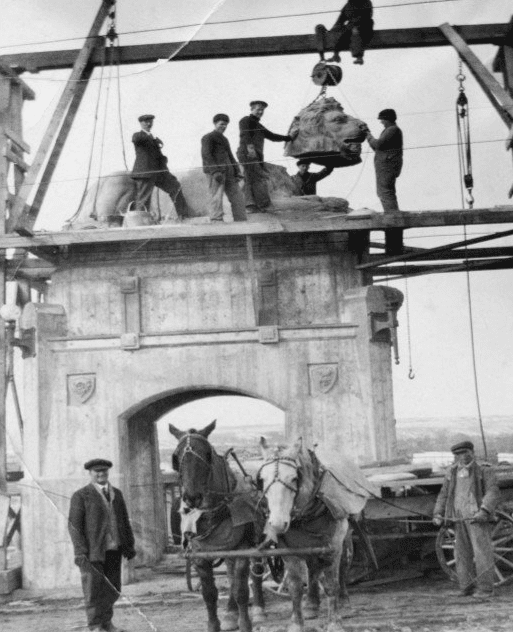The Center Street Bridge is a historic bridge over the Bow River along Calgary’s Center Street. In 1992, the bridge was listed as a Calgary Municipal Historic Landmark. It is one of the city’s tourist attractions, writes calgary-future.
Replaced MacArthur Bridge
The bridge was built in 1916 for $375,000. It replaced the steel MacArthur Bridge, built back in 1907 by Archibald J. MacArthur. He bought land for a new apartment complex in Crescent Heights and wanted his potential customers to have easy access to the complex, so he decided to build a bridge. MacArthur Bridge spanned the Bow River, connecting downtown to the north hill.

A simple structure of wood and steel forms was built without considering how it would connect with the existing road system. In 1915, a flood destroyed the bridge. Three city workers were inspecting it after the collapse, and one of them, Edwin Tumbling, drowned.
Street Bridge Bridge was designed by John F. Green. It is two-level, on the upper level – cantilevered balconies and 4 large cast concrete lions. This bridge is already resistant to natural disasters, in June 2013 it managed to withstand a large-scale flood.
The lower tier of the bridge was initially intended only for pedestrians, later it was opened for cars as well. However, the ground clearance is only 2.7 meters. Careless drivers often get stuck on a narrow two-lane road, blocking the movement of all traffic. In 2010, an improved warning system was installed at the approaches to the bridge, which halved the number of accidents.
Famous lions
The most recognizable feature of the bridge is the set of majestic lion statues that sit along the structure. The lions were cast by Scottish stonemason James L. Thomson after the bronze lions at the base of the Nelson Monument in London’s Trafalgar Square.
The dry cement molding process used to create the lions was new to Western Canada at the time. The process was also new to Thomson, but he was able to complete the statues with his artistic skills and experience working with hard stone and marble. The lions were installed at the beginning of 1917, they guarded the bridge for 82 years, until they deteriorated so much that they were sent for storage.

During the restoration of the bridge in 2001, the original lions were replaced with their replicas. Each of the statues is 12 feet long, 5 feet wide and 8 feet tall including the pedestal, weighing approximately 12,730 kg. Historically, lions have also been associated with local legends, said to leap from their pedestals at midnight and roam Chinatown in search of food.
One of the original lions of the bridge was placed in the city hall, and the rest were hidden. In April 2013, the city committee voted unanimously to place these three lions at the new West LRT C-Train stations. In 2018, one of the original lions was renovated and put on display in Rotary Park. They decided to save the other two for the future.

Originally, lions symbolized the city’s association with Great Britain and its empire, being a universally recognized British symbol. However, later they also became a symbol of Calgary’s strength, integrity and independence. Their image often appears in the city’s tourist guides, at local exhibitions, etc.
By the way, in 2021, under the bridge, construction workers unearthed a porcelain Alberta license plate from 1913. At the time, porcelain was used as a protective coating, particularly on spark plugs and car manifolds. However, the porcelain coating process was very toxic and by the end of World War I it had been phased out in favor of simpler stamped and painted plates.


